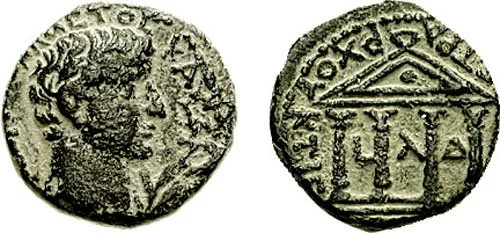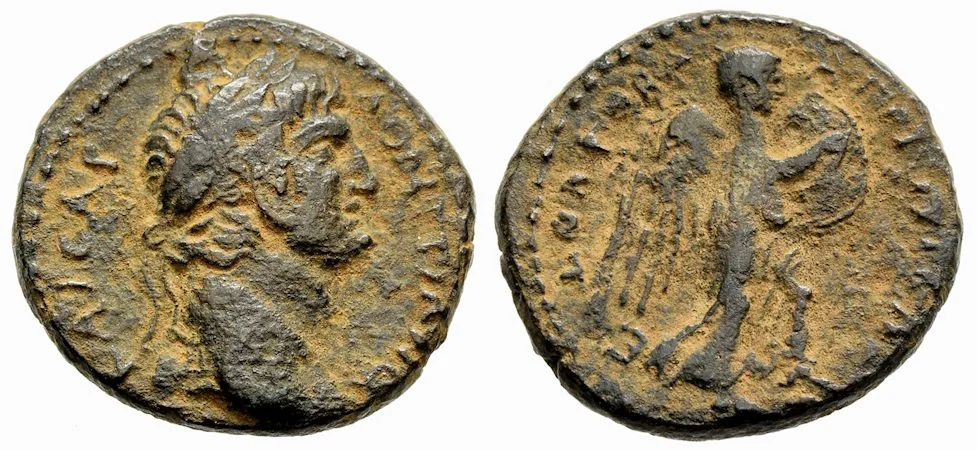The Herods of the New Testament: A Comprehensive Guide to Their Lives, Legacies, and Importance
Who Were the Herods in the New Testament? Explained
The Herods were a powerful family of rulers in the New Testament, known for their influence in Judea during the time of Jesus. Key figures include Herod the Great, who expanded the Second Temple, Herod Antipas, who executed John the Baptist, and Herod Agrippa I, who persecuted early Christians. Understanding their roles and relationships provides crucial context for the Gospels and Acts.
Introduction to the Herods
The Herods are a fascinating yet often confusing dynasty in the New Testament. Their names appear frequently in the Gospels and Acts, but their relationships, timelines, and roles in biblical history can be difficult to untangle. Who were the Herods? Why are they important? And how do they fit into the larger narrative of the New Testament?
In this blog post, we’ll break down the Herods, their family tree, their significance in biblical history, and answer some of the most common questions people have about them. This guide will help you navigate the complex world of the Herodian dynasty.
Who Were the Herods?
The Herods were a family of rulers who governed parts of the Roman Empire, primarily Judea, during the time of Jesus and the early church. They were not Jewish by ancestry but were Idumeans (Edomites) who converted to Judaism. The Herods were known for their political savvy, ambitious building projects, and often ruthless behavior.
The most prominent Herods in the New Testament are:
1. Herod the Great
2. Herod Antipas
3. Herod Philip II
4. Herod Agrippa I
5. Herod Agrippa II
Let’s dive into each of these figures and their roles in biblical history.
1. Herod the Great: The Builder and the Tyrant
Who Was Herod the Great?
Herod the Great is perhaps the most well-known of the Herods. He ruled Judea from 37 BC to 4 BC and is best known for his massive building projects, including the expansion of the Second Temple in Jerusalem. However, he was also infamous for his paranoia and brutality, including the massacre of the innocents in Bethlehem (Matthew 2:16-18).
Key Facts About Herod the Great
• Reign: 37 BC – 4 BC
• Known For: Building projects, including the Second Temple; the massacre of the innocents.
• Death: Herod died around 4 BC, likely from a painful illness.
Bust of Herod the Great. Source
https://www.alaintruong.com
Common Questions About Herod the Great
• When did Herod the Great die?
Herod died around 4 BC, shortly after the birth of Jesus.
• Was Herod the Great Jewish?
No, Herod was an Idumean (Edomite) who converted to Judaism.
• How did Herod the Great die?
Historical accounts suggest he died from a combination of kidney disease, gangrene, and other ailments.
Herod the Great in the Bible
Herod the Great plays a pivotal role in the early life of Jesus. His actions are primarily recorded in the Gospel of Matthew. When the Magi (wise men) arrived in Jerusalem seeking the newborn “King of the Jews,” Herod was deeply troubled (Matthew 2:3). He secretly met with the Magi and instructed them to report back to him after finding the child, claiming he also wanted to worship him (Matthew 2:8).
However, Herod’s true intention was to eliminate a potential rival. When the Magi did not return, Herod ordered the massacre of all male children in Bethlehem under the age of two (Matthew 2:16-18). This horrific event fulfilled the prophecy in Jeremiah 31:15.
Joseph, warned by an angel in a dream, fled to Egypt with Mary and Jesus, escaping Herod’s wrath (Matthew 2:13-15). After Herod’s death, Joseph returned to Nazareth, fulfilling another prophecy (Matthew 2:19-23).
Building Projects of Herod the Great
Herod the Great was a prolific builder, leaving a lasting architectural legacy. Some of his most famous projects include:
• The Second Temple Expansion (Wikipedia): Herod’s most significant project, which transformed the Temple in Jerusalem into one of the most magnificent structures of the ancient world.
• Herodium (Wikipedia): A fortress and palace built near Bethlehem, which also served as his burial site.
• Caesarea Maritima (Wikipedia): A major port city built to honor Caesar Augustus.
• Masada (Wikipedia): A fortress-palace near the Dead Sea, later famous for the Jewish revolt against Rome.
2. Herod Antipas: The Herod of Jesus’ Ministry
Who Was Herod Antipas?
Herod Antipas was the son of Herod the Great and ruled Galilee and Perea during Jesus’ ministry. He is best known for his role in the execution of John the Baptist (Mark 6:14-29) and for questioning Jesus before His crucifixion (Luke 23:6-12).
Key Facts About Herod Antipas
• Reign: 4 BC – 39 AD
• Known For: Executing John the Baptist; questioning Jesus.
• Death: Herod Antipas was exiled to Gaul by Emperor Caligula in 39 AD.
Coin featuring Herod Antipas, Tetrarch of Galilee and Perea, with an inscription and reed symbol, reflecting his rule during the early first century CE and his role in New Testament events. Source, Wikimedia Commons
Herod Antipas in the Bible
Herod Antipas is a prominent figure in the Gospels. His most infamous act was the execution of John the Baptist. John had publicly condemned Herod for marrying his brother’s wife, Herodias, which was unlawful (Mark 6:17-18). Herodias held a grudge against John and manipulated Herod into executing him (Mark 6:19-29).
Herod also played a role in Jesus’ trial. When Pilate learned that Jesus was from Galilee, he sent Him to Herod Antipas, who was in Jerusalem at the time (Luke 23:6-7). Herod was eager to see Jesus perform a miracle, but Jesus remained silent. Herod and his soldiers mocked Jesus before sending Him back to Pilate (Luke 23:8-12).
Herod Antipas is also mentioned in Luke 13:31-32, where some Pharisees warned Jesus that Herod wanted to kill him. Jesus responded by calling Herod a “fox” and declaring that he would continue his ministry.
3. Herod Philip II: The Lesser-Known Herod
Who Was Herod Philip II?
Herod Philip II was another son of Herod the Great. He ruled the northern regions of Iturea and Trachonitis and is mentioned briefly in the Gospels (Luke 3:1).
Key Facts About Herod Philip II
• Reign: 4 BC – 34 AD
• Known For: Building the city of Caesarea Philippi.
• Death: He died in 34 AD, and his territory was later given to Herod Agrippa I.
A bronze coin minted by Herod Philip, the son of Herod the Great and Tetrarch of Iturea and Trachonitis (4 BCE–34 CE). The coin features an image of the Roman Emperor Tiberius on one side, reflecting Herod Philip’s loyalty to Rome. The reverse side includes Greek inscriptions and symbols commonly associated with Roman rule in the region.
Wikimedia Commons, Source
Herod Philip II in the Bible
Herod Philip II is mentioned in Luke 3:1 as one of the rulers during the time of John the Baptist’s ministry. He is also associated with the city of Caesarea Philippi, where Peter made his famous confession of Jesus as the Christ (Matthew 16:13-20).
4. Herod Agrippa I: The Persecutor of the Early Church
Who Was Herod Agrippa I?
Herod Agrippa I was the grandson of Herod the Great. He ruled Judea and is known for persecuting the early church, including executing the apostle James and imprisoning Peter (Acts 12:1-23).
Key Facts About Herod Agrippa I
• Reign: 37 AD – 44 AD
• Known For: Persecuting Christians; his sudden death as described in Acts 12.
• Death: He died in 44 AD, reportedly struck down by an angel for accepting divine praise.
A set of coins from the reign of Herod Agrippa I (c. 37–44 AD), the grandson of Herod the Great and ruler of Judea. The coins display various inscriptions and symbols, reflecting both Roman authority and Jewish heritage.
Source, www.meisterdrucke.us
Herod Agrippa I in the Bible
Herod Agrippa I is a key figure in Acts 12. He executed James, the brother of John, and imprisoned Peter with the intent to kill him after Passover (Acts 12:1-4). However, an angel miraculously freed Peter from prison (Acts 12:5-19).
Herod’s death is dramatically described in Acts 12:20-23. While giving a speech, the people praised him as a god. Herod did not reject this divine praise, and an angel struck him down. He was eaten by worms and died, a clear sign of divine judgment.
5. Herod Agrippa II: The Herod of Paul’s Trial
Who Was Herod Agrippa II?
Herod Agrippa II was the son of Herod Agrippa I. He is best known for hearing the apostle Paul’s defense in Caesarea (Acts 25:13-26:32).
Key Facts About Herod Agrippa II
• Reign: 50 AD – 93 AD
• Known For: His role in Paul’s trial.
• Death: He died in 93 AD, the last of the Herodian rulers.
An ancient bronze coin from the Judaean Kingdom, issued under Herod Agrippa II during the reign of Emperor Domitian (c. 81–96 AD). The obverse features a laureate bust of Domitian, while the reverse displays a depiction related to the “Judaea Capta” series, commemorating the Roman victory over Judea. T
Source, www.forumancientcoins.com
Herod Agrippa II and Paul in the Bible
Herod Agrippa II appears in Acts 25-26 during Paul’s trial. Paul had appealed to Caesar, and Festus, the Roman governor, sought Agrippa’s advice on how to present the case (Acts 25:13-22).
Agrippa and his sister Bernice listened to Paul’s defense, where he shared his conversion story and proclaimed the gospel (Acts 26:1-23). Agrippa responded by saying, “Do you think that in such a short time you can persuade me to be a Christian?” (Acts 26:28). Although Agrippa did not convert, he acknowledged that Paul had done nothing deserving of death or imprisonment (Acts 26:31-32).
Conclusion
The Herods were a complex and influential dynasty that shaped the political and religious landscape of the New Testament. From Herod the Great’s building projects to Herod Agrippa II’s encounter with Paul, their stories are intertwined with the life of Jesus and the early church.
If you found this guide helpful, share it with others who might be curious about the Herods. And if you have more questions, feel free to leave a comment below!




